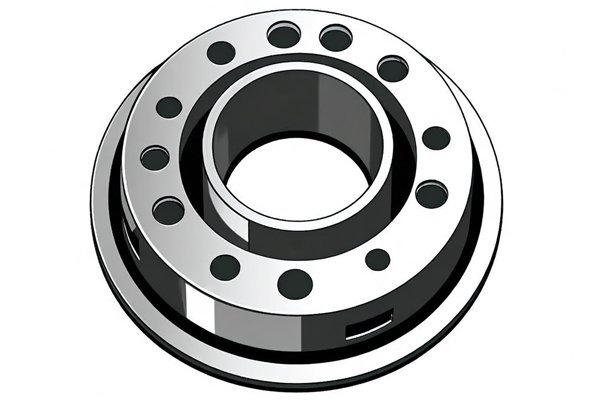Did you know that CNC machining has revolutionized the manufacturing industry, enabling businesses to produce intricate components with unmatched precision? According to a study by Market Research Future, the global CNC machining market is expected to reach over $100 billion by 2026, reflecting a growth rate of around 6% annually. This rapid expansion underscores the increasing reliance on automated processes to handle complex geometries and shapes that traditional methods struggle to achieve. If you’ve ever wondered how CNC processing can address challenges in manufacturing complex-shaped parts, you’re in the right place!
In this blog, we’ll delve into how CNC (Computer Numerical Control) processing enhances manufacturing efficiency specifically for complex components. From understanding the technology behind CNC machining to exploring real-world applications and providing solutions for manufacturers, we’ll cover a range of topics to provide a comprehensive overview of this vital area.
Understanding CNC Processing
What is CNC Machining?
CNC machining refers to the automated control of machining tools via a computer. In contrast to manual machining, CNC machines are capable of precise movements in multiple axes, allowing for the creation of highly intricate shapes and designs. This kind of processing is critical in industries such as aerospace, automotive, medical devices, and consumer electronics, where precision and accuracy are paramount.
How CNC Machines Work
CNC machines operate on a simple yet powerful principle:
Benefits of CNC Machining for Complex-Shaped Parts
Using CNC processing to craft complex-shaped parts comes with several advantages:
Challenges in Manufacturing Complex-Shaped Parts
Even with the benefits of CNC technology, manufacturers still face challenges when working with complex-shaped parts:
Solutions to Optimize CNC Machining for Complex Parts

To tackle these challenges, manufacturers can adopt various strategies that improve efficiency when handling complex-shaped parts.
Implementing advanced toolpath strategies can lead to substantial improvements in machining efficiency. Techniques like helical interpolation, adaptive clearing, and trochoidal milling allow for smoother tool movement, reducing tool wear and increasing feed rates.
A significant advantage of CNC machining is its ability to operate in multiple axes. While 3-axis machines suffice for many shapes, 5-axis machining can directly improve efficiency for more intricate designs by allowing simultaneous movements. This reduces the need for multiple setups and minimizes cycle time.
Selecting the right material is crucial for optimizing machining processes. Using advanced composites or alloys specifically designed for CNC machining can help reduce challenges associated with material behavior, leading to smoother machining experiences.
Routine maintenance ensures that CNC machines operate at peak efficiency. Regular checks on mechanical components, software updates, and precise calibration can reduce unplanned downtime that may occur due to equipment failure.
Implementing Enterprise Resource Planning (ERP) or Manufacturing Execution Systems (MES) can streamline workflow and communication processes. These technologies facilitate real-time monitoring of production and resource management, ensuring that parts are machined as efficiently and timely as possible.
Real-World Applications of CNC Machining in Complex Shapes
Aerospace Industry
In aerospace manufacturing, components like turbine blades, which have complex internal cooling passages, are produced using advanced CNC machining techniques. Their precision ensures that these critical parts can withstand harsh operational conditions, with any flaws potentially leading to catastrophic failures.
Medical Devices
CNC technology plays a pivotal role in producing medical devices, such as customized prosthetics. These parts often require intricate designs to fit specific human anatomies. CNC processing allows for rapid prototyping and production, enabling timely delivery of life-saving devices.
Automotive Parts
Automobile components frequently require complex geometries for performance, such as intake manifolds or suspension components. Using CNC machining enables manufacturers to produce lightweight yet high-strength parts that contribute to overall vehicle efficiency.
CNC processing has significantly advanced manufacturing capabilities, particularly for producing complex-shaped parts. Through precision, efficiency, and flexibility, CNC machining not only improves the manufacturing process but also ensures consistent quality across all outputs. By adopting advanced toolpath strategies, multi-axis machining, and maintaining CNC equipment, manufacturers can optimize their workflows and tackle the inherent challenges in producing intricate components.
In today’s innovative climate, embracing CNC machining is not just a competitive advantage; it is a necessity for manufacturers aiming to stay relevant in a rapidly evolving market. Understanding the intricacies of CNC processing and its effect on complex parts can lead to transformative improvements in production efficiency and product quality.
As we move towards an increasingly automated future, the role of CNC machining in industries cannot be overlooked. It’s important to remember that the choices we make now in our manufacturing processes will shape the technology landscape for years to come. Let’s commit to leveraging these advancements in CNC to create better, more efficient products that can stand the test of time.






